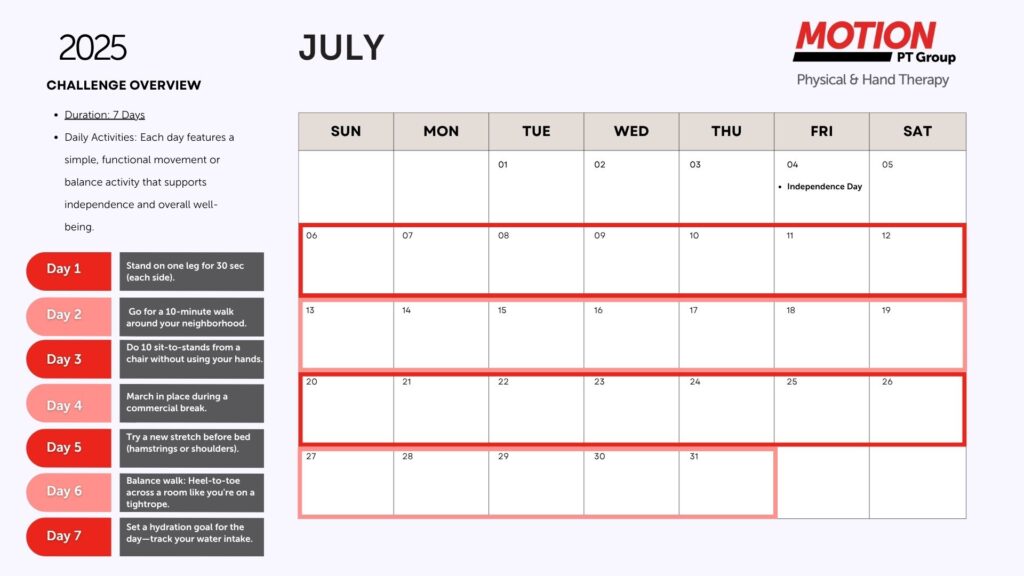How is your golf season going? Aches and pains don’t need to keep you from the green. See below for tips to keep you healthy and pain-free as you navigate the course from your MOTION Physical Therapists (PT).
1. Warm up
a. Properly loosening up prior to swinging can prevent injury and improve your performance. Tim King, PT, DPT, SCS, MOTION physical therapist who is Titleist Performance Institute (TPI) Medically Certified, recommends starting by grabbing a golf club, holding it across your chest, and simply rotating back and forth, almost like you’re simulating a golf swing, rotating backwards to activate your backswing, then rotate forward simulating your follow-through. Start with shorter motions and gradually rotate more and more as you loosen up. Perform 20-30 easy rotations to start the warmup process.
b. Now you are ready for practice swings. Get to the course before your tee time so you can hit a small bucket of balls on the practice range. By doing this, you are preparing your spine, hips, and shoulders to swing 50+ times.
c. When you’re on the range, start with some easy swings with your pitching wedge. Never jump in with a Driver (as much as you want to launch it!). Shorter clubs require shorter motions to swing and are more appropriate to start a warmup. Start with 5-10 swings with your pitching wedge, then move on to a mid-iron like your 7 irons, and take another 5-10 swings.
d. Some swing training tools (the orange whip, for example) can also provide a means of a warmup by gently swinging to simulate your golf swing.
2. Build-up
a. Take it slow: if you haven’t touched your clubs since last season, start with a few shortened range sessions first to rebuild your golf conditioning.
b. Don’t go to the driving range and hit a jumbo bucket of 200 balls to start. Tim cautions that “Your swing efficiency can deteriorate as you quickly fatigue, which can lead to injury. Start with no more than 30-40 swings total with short irons. Longer clubs can cause more rotation through an unprepared back, combined with the urge to “grip it and rip it”- a recipe for injury.”
c. Consider taking a golf cart if you haven’t played much or are nursing an injury. Your average golf course measures close to 4 miles long from start to finish, and that doesn’t include the search for golf balls in the woods!
d. The more swings you take, the more risk of injury. As you head back to the course, consider playing 9-holes versus 18-holes until your body gets used to swinging again.
Every patient presents differently based on previous injury history and anatomical limitations. Golfers are no different. Talk with your MOTION physical therapist if you are currently in treatment and looking to hit the course. Your PT can help you protect your joints as you swing and identify any movement patterns that may put you at increased risk of injury. From there, they can provide exercises to not only help decrease injury risk but also to improve your golf performance and help you shoot your best round.




